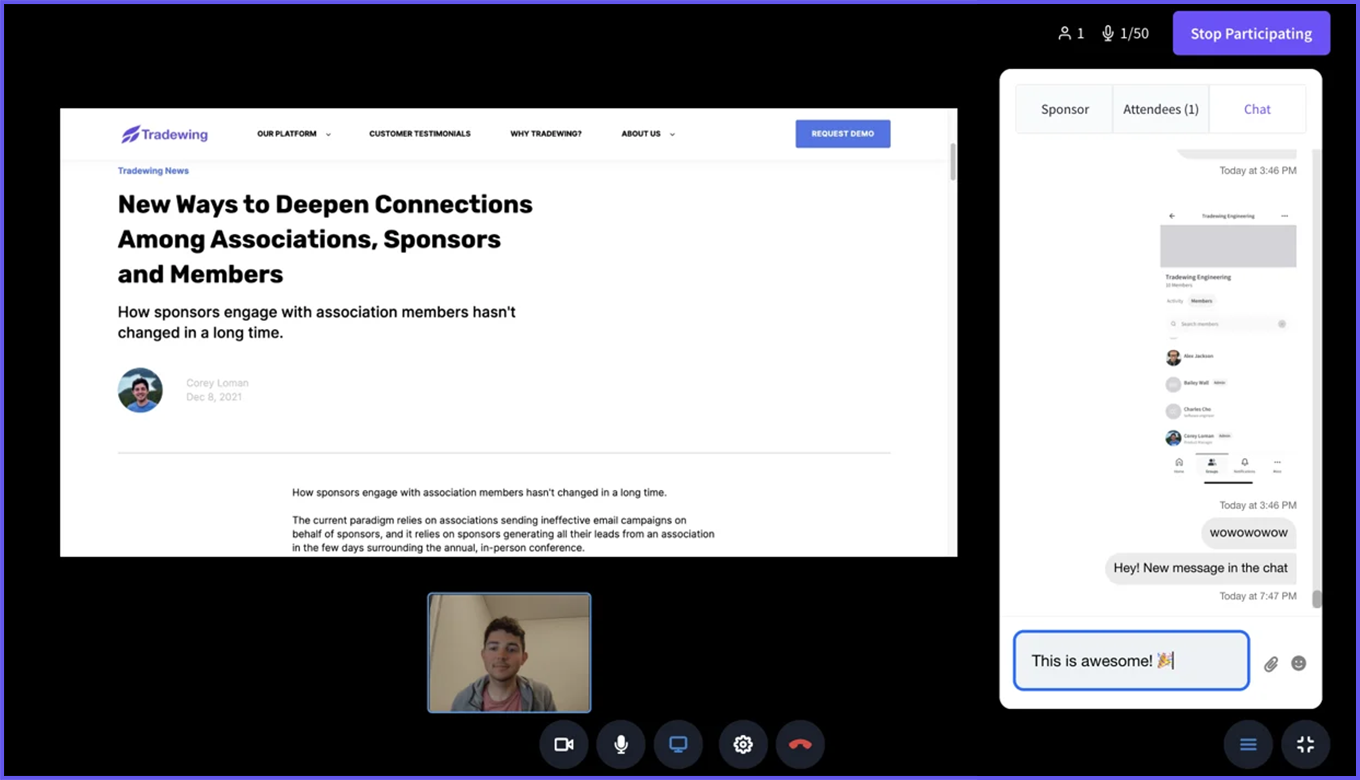Turning Event Data Into Actionable Fundraising Insights: 7 Tips
Every fundraising event generates valuable data, such as attendee registration rates, average donation amounts, sponsor engagement metrics, and post-event donor conversion statistics.
However, successful fundraising teams don’t just collect data; they analyze this data to personalize future outreach and donation asks. This means using event-specific metrics—like who clicked through a post-event survey or who bid on a silent auction item—to segment your lists with greater precision. By understanding these individual motivations, you can move away from mass communication and instead ensure that every follow-up email, annual appeal, or volunteer opportunity is tailored to a donor’s demonstrated interest, significantly increasing both engagement and long-term retention.
In this post, you’ll learn how to turn your event data into actionable insights that help your organization raise more funds, deepen donor relationships, and improve future event performance.
Benefits of Collecting Nonprofit Event Data
Collecting event data is important, but knowing how to interpret and apply it is where the real transformation happens. When you approach your fundraising strategy with a data-driven mindset, you can make decisions rooted in facts rather than assumptions.
When you use event data strategically, you can:
- Personalize donor outreach by recognizing interests and giving behaviors
- Improve event ROI by focusing on what drives engagement and donations
- Strengthen relationships with supporters through more relevant follow-ups
- Forecast future revenue by identifying trends in donor participation
In short, the more you understand your event data, the more effectively you can turn engagement into long-term fundraising success.
Essential Event Data to Track
Before you can turn event data into fundraising insights, you need to make sure you’re capturing the right information. Every detail, from who attends your events to how they engage, can reveal valuable clues about your supporters’ motivations and preferences. By being intentional about what you track and how you collect it, you’ll build a foundation for more strategic fundraising decisions.
Key Metrics to Track
Not all data points carry the same weight. Focus on metrics that connect directly to your fundraising goals and supporter engagement:
- Attendee demographics: Understand who your participants are, including member status, donor history, and geographic location.
- Registration and ticket data: Track how attendees found your event, when they registered, and what ticket types they purchased.
- Engagement data: Capture session attendance, booth visits, or activity participation to see where interest is strongest.
- Donation data: Record when and how attendees give—before, during, or after the event—to identify giving patterns.
- Survey responses: Post-event feedback offers context that pure numbers can’t, helping you understand sentiment and satisfaction.
7 Tips to Turn Data Into Fundraising Action
Collecting and analyzing event data is only valuable if you act on it. The real power lies in transforming those insights into concrete steps that strengthen donor relationships, increase contributions, and improve future events. Here are seven practical ways to put your data to work.
Tip 1: Personalize Donor Follow-Ups
Use event engagement data to make your post-event communication more meaningful. For example, if a supporter attended a specific session or activity, reference it in your thank-you message or follow-up appeal. This small touch shows you’re paying attention and makes donors feel seen and valued.
Tip 2: Identify and Nurture High-Value Prospects
Look for patterns in your event data that reveal your strongest fundraising leads. Attendees who participate in multiple events, engage with sponsors, or consistently respond to surveys are often prime candidates for higher giving levels. Use this insight to create a targeted cultivation plan that nurtures these prospects over time.
Tip 3: Optimize Future Event Strategies
Your event metrics tell you what works and what doesn’t. If data shows that one type of activity consistently drives donations or engagement, make it a centerpiece of your next event. Conversely, phase out underperforming sessions or formats. Over time, this approach increases event ROI and ensures every decision is supported by evidence.
Tip 4: Align Fundraising Goals With Attendee Interests
Review participation trends to understand what motivates your audience. If younger attendees engage more with digital donation tools or interactive campaigns, adjust your fundraising approach to match. Aligning your appeals with proven behaviors increases response rates and helps you reach donors where they’re most active.
Tip 5: Strengthen Sponsor and Partner Relationships
Your event data can also provide value to sponsors and partners. Share engagement metrics such as booth visits, session attendance, or impressions to demonstrate ROI and build trust. When sponsors see the measurable impact of their investment, they’re more likely to renew or increase support for future events.
Tip 6: Create Real-Time Engagement Opportunities
Leverage live event analytics to make quick, informed decisions. For instance, if you notice a surge in attendance for a particular session, consider promoting related fundraising appeals in real time. Data dashboards or mobile event apps can help your team respond dynamically.
Tip 7: Measure and Communicate Impact
Once the event is over, UpMetrics recommends compiling your findings into a visual report or dashboard that highlights key outcomes, such as donations raised, engagement rates, and supporter growth. Share these insights with your board, staff, and donors to show transparency and reinforce your organization’s impact. Demonstrating measurable success builds trust and encourages continued giving.
When you transform your event data into actionable insights, you move from reactive to proactive fundraising. Each data point becomes an opportunity—to connect, improve, and grow your mission-driven impact.
Your events generate more than just attendance numbers; they reveal what inspires people to give and engage. When you turn that data into action, every event becomes an opportunity to strengthen relationships, increase donations, and grow your mission.
Start using your event data strategically, and you’ll not only improve your next fundraiser, you’ll build a smarter, more sustainable path toward lasting impact.











